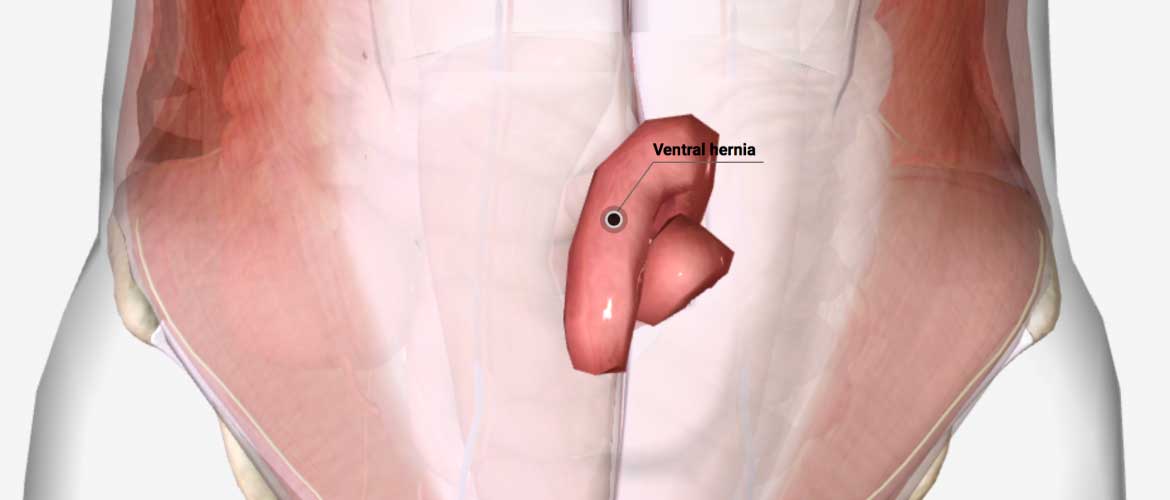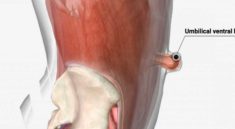

INFORMATION
Femoral hernia repair
Femoral hernia repair is surgery to repair a hernia near the groin or upper thigh. A femoral hernia is tissue that bulges out of a weak spot in the groin. Usually this tissue is part of the intestine.
Description
During surgery to repair the hernia, the bulging tissue is pushed back in. The weakened area is sewn closed or strengthened. This repair can be done with open or laparoscopic surgery. You and your surgeon can discuss which type of surgery is right for you.
In open surgery:
- You may receive general anesthesia. This is medicine that keeps you asleep and pain-free. Or, you may receive regional anesthesia, which numbs you from the waist to your feet. Or, your surgeon may choose to give you local anesthesia and medicine to relax you.
- Your surgeon makes a cut (incision) in your groin area.
- The hernia is located and separated from the tissues around it. Some of the extra hernia tissue may be removed. The rest of the hernia contents are gently pushed back inside your abdomen.
- The surgeon then closes your weakened abdominal muscles with stitches.
- Often a piece of mesh is also sewn into place to strengthen your abdominal wall. This repairs the weakness in the wall.
- At the end of the repair, the cuts are stitched closed.
In laparascopic surgery:
- The surgeon makes 3 to 5 small cuts in your groin and lower belly.
- A medical device called a laparoscope is inserted through one of the cuts. The scope is a thin, lighted tube with a camera on the end. It lets the surgeon see inside your belly.
- Other tools are inserted through the other cuts. The surgeon uses these tools to repair the hernia.
- The same repair will be done as in open surgery.
- At the end of the repair, the scope and other tools are removed. The cuts are stitched closed.
Why the Procedure is Performed
A femoral hernia needs to be repaired, even if if it does not not cause symptoms. If the hernia is not repaired, the intestine can get trapped inside the hernia. This is called an incarcerated or strangulated hernia. It can cut off blood supply to the intestines. This can be life-threatening. If this happens, you would need emergency surgery.
Risks
Risks for anesthesia and surgery in general are:
- Reactions to medicines
- Breathing problems
- Bleeding, blood clots, or infection
Risks for this surgery are:
- Damage to blood vessels that go to the leg
- Damage to the nearby nerve
- Damage near the reproductive organs, for women
- Long-term pain
- Return of the hernia
Before the Procedure
Tell your surgeon or nurse if:
- You are or could be pregnant
- You are taking any medicines, including drugs, supplements, or herbs you bought without a prescription
During the week before your surgery:
- You may be asked to stop taking drugs that make it hard for your blood to clot. These include aspirin, ibuprofen (Advil, Motrin), clopidogrel (Plavix), warfarin (Coumadin), naproxen (Aleve, Naprosyn), and others.
- Ask your surgeon which drugs you should still take on the day of surgery.
On the day of surgery:
- Follow instructions about when to stop eating and drinking.
- Take the drugs your surgeon told you to take with a small sip of water.
- Arrive at the hospital on time.
After the Procedure
Most people can go home on the same day as the surgery. Some need to stay in the hospital overnight. If your surgery was done as an emergency, you may need to stay in the hospital a few days longer.
After surgery, you may have some swelling, bruising, or soreness around the incisions. Taking pain medicines and moving carefully can help.
Follow instructions about how active you can be while recovering. This may include:
- Returning to light activities soon after going home, but avoiding strenuous activities and heavy lifting for a few weeks.
- Avoiding activities that can increase pressure in the groin area. Move slowly from a lying to a seated position.
- Avoiding sneezing or coughing forcefully.
- Drinking plenty of fluids and eating lots of fiber to prevent constipation.
Outlook (Prognosis)
Outcome of this surgery is often very good. In some people, the hernia returns.
How long does it take to recover from a femoral hernia operation?
It usually takes 10–15 days to get back to activities such as shopping. You may recover faster if you had keyhole surgery. You should be able to return to work after two to four weeks, depending on the extent of the surgery and your type of work.
What happens if a femoral hernia goes untreated?
When left untreated, a femoral hernia can result in additional complications, some of them severe. These complications may include: Incarcerated hernia: A hernia can grow to obstruct the bowel if its contents become trapped in the weak area of the abdominal wall





